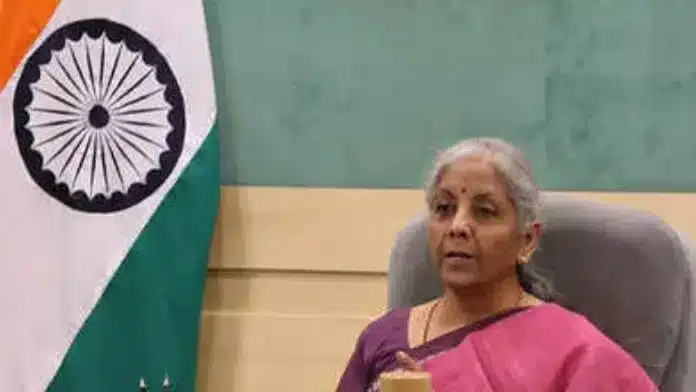Economic Survey 2024 News
Economic Survey 2023-24 was tabled in Parliament by Union Minister for Finance and Corporate Affairs, Smt. Nirmala Sitharaman.
What is Economic Survey 2024?
- About
- The Economic Survey of India is an annual report released by the Finance Ministry. It details the state of the economic performance of the country in the past year.
- The survey highlights macroeconomic figures and economic progress of the country.
- It also mentions the possible economic challenges that India might face in future and suggests measures to overcome them.
- Preparations and presented by
- The survey is prepared by the Economic Division of the Department of Economic Affairs in the Ministry of Finance under the supervision of the Chief Economic Advisor of India (CEA).
- The Economic Survey of India is presented every year a day before the Union Budget is announced.
- The first Economic Survey was presented for 1950-51 and until 1964, it was presented along with the Budget.
- Significance
- Even though it comes just a day before the Budget, the assessment and recommendations carried out in the survey are not binding on the Budget.
- However, the survey remains the most authoritative and comprehensive analysis of the economy that is conducted from within the Union government.
- Its observations and details provide an official framework for analysing the Indian economy.
Economic Survey 2023-24 Key highlights
- India’s economy – steady as she goes
- The Economic Survey conservatively projects a real GDP growth of 6.5–7 per cent, with risks evenly balanced.
- India’s real GDP grew by 8.2 per cent in FY24, exceeding 8 per cent mark in three out of four quarters of FY24.
- On supply side, Gross value added (GVA) grew by 7.2 per cent in FY24 (at 2011-12 prices) and net taxes at constant prices grew by 19.1 per cent in FY24.
- The retail inflation reduced from 6.7 per cent in FY23 to 5.4 per cent in FY24.
- Current Account Deficit (CAD) stood at 0.7 per cent of the GDP during FY24, an improvement from the deficit of 2.0 per cent of GDP in FY23.
- 55% of tax collected accrued from direct taxes and remaining 45% from indirect taxes.
- Government has been able to ensure free food grains to 81.4 Crore people. Total expenditure allotted to capital spending have progressively enhanced.
- Monetary Management and Financial Intermediation- Stability is the Watchword
- Credit disbursal by Scheduled Commercial Banks (SCBs) stood at ₹164.3 lakh crore, growing by 20.2 per cent at the end of March 2024.
- Agriculture and allied activities witnessed double digits growth in credit during FY24.
- Industrial credit growth was 8.5 per cent compared to 5.2 per cent a year ago.
- Primary capital markets facilitated capital formation of ₹10.9 lakh crore during FY24 (approximately 29 per cent of the gross fixed capital formation of private and public corporates during FY23).
- Financial inclusion is not just a goal but also an enabler for sustainable economic growth, reduction of inequality and elimination of poverty.
- The next big challenge is Digital Financial Inclusion (DFI).
- India poised to emerge as one of the fastest-growing insurance markets in the coming decade.
- Indian microfinance sector emerges as the second largest in the world after China.
- Prices and Inflation- Under Control
- The survey highlights that the inflation rate was stable, reflecting effective monetary policy management.
- Central Government announced price cuts for LPG, petrol, and diesel. As a result, retail fuel inflation stayed low in FY24.
- In August 2023, the price of domestic LPG cylinders was reduced by ₹200 per cylinder across all markets in India. Since then, LPG inflation has been in the deflationary zone.
- Core services inflation eased to a nine-year low in FY24; at the same time, core goods inflation also declined to a four-year low.
- In FY24, core consumer durables inflation declined due to an improved supply of key input materials to industries.
- Agriculture sector faced challenges due to extreme weather events, depleted reservoirs, and crop damage, which impacted farm output and food prices.
- Food inflation stood at 6.6 per cent in FY23 and increased to 7.5 per cent in FY24.
- Government took appropriate administrative actions, including dynamic stock management, open market operations, subsidised provision of essential food items and trade policy measures, which helping to mitigate food inflation.
- The survey emphasizes the need for targeted interventions to manage food prices effectively.
- It makes a case for changing the inflation targeting framework of the central bank by excluding food inflation.
Also Read: Economic Survey 2024 India’s Growth Strategies
- External Sector – Stability Amid Plenty
- India’s external sector remained strong amidst on-going geopolitical headwinds accompanied by sticky inflation.
- India’s rank in the World Bank’s Logistics Performance Index improved by six places, from 44th in 2018 to 38th in 2023, out of 139 countries.
- The moderation in merchandise imports and rising services exports have improved India’s current account deficit which narrowed 0.7 per cent in FY24.
- India is gaining market share in global exports of goods and services.
- Its share in global goods exports was 1.8 per cent in FY24, against an average of 1.7 per cent during FY16-FY20.
- India’s services exports grew by 4.9 per cent to USD 341.1 billion in FY24, with growth largely driven by IT/software services and ‘other’ business services.
- India is the top remittance recipient country globally, with remittances reaching a milestone of USD 120 billion in 2023.
- India’s external debt has been sustainable over the years, with the external debt to GDP ratio standing at 18.7 per cent at the end of March 2024.
- Medium-Term Outlook – A Growth Strategy for New India
- Key areas of policy focus in the short to medium term:
- job and skill creation,
- tapping the full potential of the agriculture sector,
- addressing MSME bottlenecks,
- managing India’s green transition,
- deftly dealing with the Chinese conundrum,
- deepening the corporate bond market,
- tackling inequality and improving our young population’s quality of health.
- Amrit Kaal’s growth strategy based on six key areas:
- boosting private investment,
- expansion of MSMEs,
- agriculture as growth engine,
- financing green transition,
- bridging education-employment gap, and
- building capacity of States.
For Indian economy to grow at 7 per cent plus, a tripartite compact between the Union Government, State Governments and the private sector is required.
Economic Survey 2024 FAQ’s
Q1. What is World Bank’s Logistics Performance Index?
Ans. The World Bank’s Logistics Performance Index (LPI) is a benchmarking tool that measures the efficiency of international supply chains across countries. It evaluates logistics performance based on six key dimensions: customs, infrastructure, international shipments, logistics quality and competence, tracking and tracing, and timeliness, providing insights into logistics strengths and challenges.
Q2. What is Digital Financial Inclusion (DFI)?
Ans. Digital Financial Inclusion (DFI) refers to the use of digital technology to provide affordable and accessible financial services to underserved and unbanked populations. It aims to enhance access to banking, credit, insurance, and payment services through digital platforms, promoting economic empowerment and reducing poverty by increasing financial accessibility and literacy.
Last updated on December, 2025
→ Check out the latest UPSC Syllabus 2026 here.
→ Join Vajiram & Ravi’s Interview Guidance Programme for expert help to crack your final UPSC stage.
→ UPSC Mains Result 2025 is now out.
→ UPSC Notification 2026 is scheduled to be released on January 14, 2026.
→ UPSC Calendar 2026 is released on 15th May, 2025.
→ The UPSC Vacancy 2025 were released 1129, out of which 979 were for UPSC CSE and remaining 150 are for UPSC IFoS.
→ UPSC Prelims 2026 will be conducted on 24th May, 2026 & UPSC Mains 2026 will be conducted on 21st August 2026.
→ The UPSC Selection Process is of 3 stages-Prelims, Mains and Interview.
→ UPSC Result 2024 is released with latest UPSC Marksheet 2024. Check Now!
→ UPSC Prelims Result 2025 is out now for the CSE held on 25 May 2025.
→ UPSC Toppers List 2024 is released now. Shakti Dubey is UPSC AIR 1 2024 Topper.
→ UPSC Prelims Question Paper 2025 and Unofficial Prelims Answer Key 2025 are available now.
→ UPSC Mains Question Paper 2025 is out for Essay, GS 1, 2, 3 & GS 4.
→ UPSC Mains Indian Language Question Paper 2025 is now out.
→ UPSC Mains Optional Question Paper 2025 is now out.
→ Also check Best IAS Coaching in Delhi

















